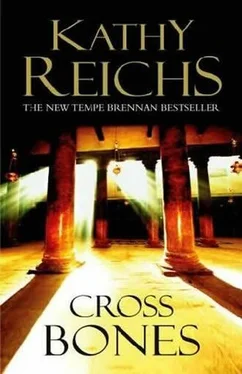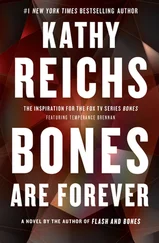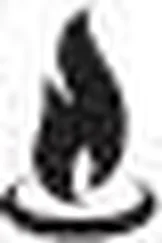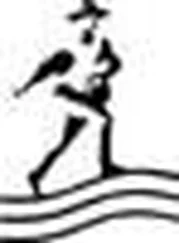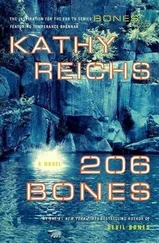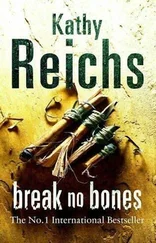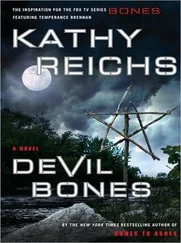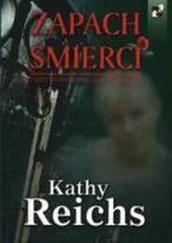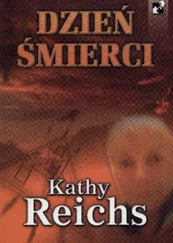“Not exactly.”
“You sent samples on your own?”
Jake shrugged. “Blotnik refused. What was I supposed to do?”
“Ballsy move,” Ryan said.
“I’ll ask now what I asked then,” I said. “What’s the point of genetic profiling when there’s nothing for comparison?”
“It should still be done. Now, follow me.”
Jake led us to the back bedroom, where he’d spread photos on a worktable. A few showed whole ossuaries. Many showed fragments.
“The robbers took a lot of boxes, smashed others,” Jake said. “But they left enough for reconstruction.”
Jake dug a five-by-seven from the stack and handed it to me. It pictured eight ossuaries. All had cracks. Many had gaps.
“Ossuaries differ in style, size, shape, thickness of stone, the way the lid fits. Most are fairly plain, but some have elaborate decoration. That of Joseph Caiaphas, for example.”
“The Sanhedrin Council elder who committed Jesus for trial before Pontius Pilate,” Ryan said.
“Yes. Though his Hebrew name was Yehosef bar Qayafa. Caiaphas was high priest of Jerusalem from eighteen until thirty-sevenC. E. His ossuary was discovered in 1990. It’s amazing, carved with unbelievably beautiful inscriptions. Also discovered around that time was an ossuary inscribed ‘Alexander, son of Simon of Cyrene.’ That box was also lavishly decorated.”
“Simon was the gentleman who helped Jesus carry the cross on the road to Golgotha.”
Ryan, the biblical scholar.
“You know your New Testament,” Jake said. “Simon and his son Alexander are mentioned in Mark 15:21.”
Ryan smiled modestly, then tapped the photo of Jake’s reconstructions. “I like the ones with the flower petal things.”
“Rosettes.” Jake pulled out two more five-by-seven glossies. “Now look at these.”
He handed the photos to Ryan. I leaned close.
The ossuary depicted was close to rectangular, with a fitted cover and a pocked surface. In one view, I could make out traces of carved rosettes. The circle-on-circle figures reminded me of the patterns we drew with pencil compasses when we were kids.
In the second view, a crack jagged across one end, made a hard right, and shot northwest up the box’s camera-facing side.
The little bone coffin looked exactly like those Jake had glued back together.
“The James ossuary?” I asked.
“Notice the inscription.” Jake handed us each a magnifying lens. “Do you read Aramaic?” he asked Ryan
Ryan shook his head. I gave him a look of feigned surprise.
Jake missed or ignored the exchange. “The astonishing thing about the James ossuary is the unusual refinement in the inscription. It’s much more in keeping with inscriptions found on more lavishly styled ossuaries.”
You could have fooled me. Even magnified, the message looked like a child’s scratching.
Jake’s finger started on the cluster of symbols at the far right end.
“The Jewish name Jacob, or Ya’akov, translates in English to ‘James.’”
“Thus the term Jacobites for the supporters of King James the Second of England.”
Ryan was starting to get on my nerves.
“Right.” Jake’s finger moved left across the famous little symbols. “‘James, son of Joseph, brother of Jesus.’” He tapped the cluster of symbols at the left end. “Yeshua, or Joshua, translates to ‘Jesus’ in English.”
Jake retrieved and lay down the photos.
“Now come with me.”
He led us to the rear of the enclosed porch, unlocked a large cabinet, and spread the double doors. Limestone shards filled the top two shelves. The reconstructed ossuaries occupied the lower six.
“Apparently these weren’t the brightest looters on the planet. They missed a number of inscribed fragments.”
Jake handed me a triangular shard from the top shelf. The letters were shallow and nearly invisible. I brought them into focus under my lens. Ryan put his face close to mine.
“Marya,” Jake translated. “‘Mary’ in English.”
Jake pointed to an inscription on one of the reconstructed boxes. The symbols looked similar.
“Matya. ‘Matthew.’”
Jake ran a finger across lettering on a larger box one shelf down.
“Yehuda, son of Yeshua. ‘Jude, son of Jesus.’”
Jake dropped to the third shelf.
“Yose. ‘Joseph.’”
He moved to the box next to Joe’s.
“Yeshua, son of Yehosef. ‘Jesus, son of Joseph.’”
Shelf four.
“Mariameme. ‘The one called Mara.’”
“That writing looks different,” Ryan said.
“Good eye. That’s Greek. Hebrew. Latin. Aramaic. Greek. The Mideast was a linguistic mosaic back then. Marya, Miriam, and Mara are all the same name, basically, ‘Miriam’ or ‘Mary.’ And nicknames were used, just as they are today. Mariameme is a diminutive of ‘Miriam.’” Jake pointed to shelf three. “And Yehosef and Yose are the same name, Joseph.”
Returning to the top shelf, Jake selected another fragment, and exchanged it for the one I was holding. This inscription made Marya’s look like new. The lettering was so faint it was almost invisible.
“That name is probably Salome,” Jake said. “But I can’t be sure.”
I ran the names through my mind.
Mary. Mary. Salome. Joseph. Matthew. Jude.
Jesus.
The Jesus family? The Jesus family tomb? Everyone fit but Matthew.
I thought, but didn’t say, Oh. My. God.
“HOW DO BIBLICAL SCHOLARS OR HISTORIANS INTERPRET THEJesus family?” I asked, keeping my voice steady.
“The historical view is that Jesus, his four brothers, James, Joseph, Simon, and Jude, and his two sisters, Mary and Salome, were the biological children of Joseph and Mary. The Protestant view is that Jesus had no human father, but Mary had other children by Joseph.”
“Making Jesus the eldest sibling,” Ryan said.
“Yes,” Jake said.
“The Vatican sees Mary as a perpetual virgin,” I said.
“No siblings allowed,” Ryan added.
Jake nodded. “The Western Catholic view is that the others were first cousins, offspring of Joseph’s brother Clopas, who was also married to a woman named Mary. The Eastern Orthodox view is that God is the father of Jesus, Mary remained a virgin, and the brothers and sisters are the children of Joseph, a widower, by a previous marriage.”
“Making Jesus the youngest.” Ryan was infatuated with birth order.
“Yes,” Jake said.
My mind cataloged.
Two Mary’s. Salome. Jude. Joseph. And someone named Matthew.
Something fluttered in my gut.
“Weren’t these names common, like Joe or Tom today?” I asked.
“Very,” Jake said. “Anyone hungry?”
“No,” I said.
“Yes,” Ryan said.
We trooped back to the kitchen. Jake laid out cold cuts, cheese, flat bread, oranges, pickles, and olives. The cats watched as we helped ourselves. Ryan skipped the olives.
When we’d sandwiched up, we moved to a picnic table in the dining area. We talked as we ate.
“Mary was the most common female name in first-century Roman Palestine,” Jake said. “For men it was Simon, followed by Joseph. Uncovering ossuaries with these names is no big deal. Whatis a big deal is the co-occurrence, the finding of the names in a single tomb. That’s the mind-blow.”
“But, Jake-”
“I’ve studied published catalogs of Jewish ossuaries. Of the thousands of boxes stored in collections all over Israel, only six are inscribed with the name Jesus. Of those six, only one is inscribed ‘Jesus, son of Joseph.’ And now ours.”
Jake shooed a cat.
“Ever hear of onomastics or prosopography?”
Ryan and I shook our heads.
“The statistical analysis of names.” Jake popped an olive into his mouth and talked through the depitting process. “For example, among his catalog of published ossuaries, an Israeli archaeologist named Rahmani found nineteen Josephs, ten Joshuas, and five Jacobs, or James.”
Читать дальше
